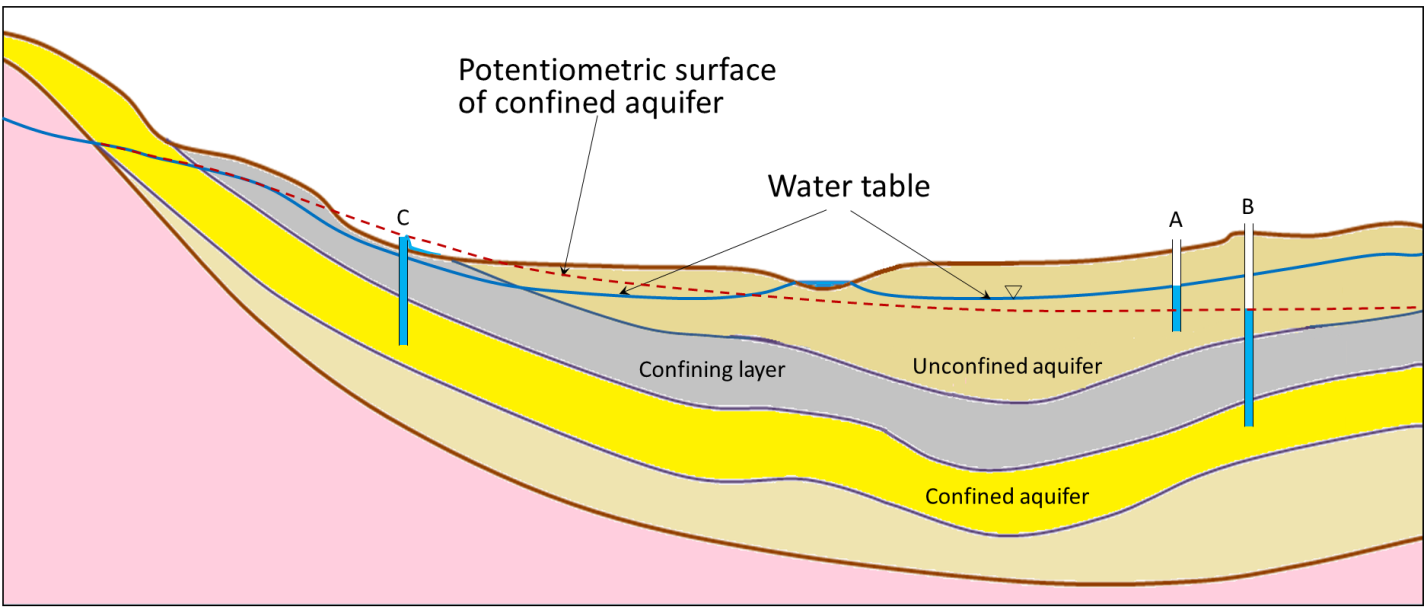Groundwater is a critical resource that provides drinking water to billions of people worldwide. But how exactly is groundwater formed? In this article, we will explore the process of groundwater formation, including the various factors that influence it. We will also discuss the importance of groundwater and the threats that it faces.
The Formation of Groundwater
Groundwater is formed through a complex process that begins with precipitation. When rain falls, some of it infiltrates into the soil and rocks, while the rest runs off into rivers, lakes, and oceans. The portion that infiltrates into the ground becomes groundwater.
The rate at which precipitation infiltrates into the ground depends on several factors, including the type of soil or rock, the intensity and duration of the rainfall, and the slope of the land. If the soil or rock is permeable, meaning that it allows water to flow through it easily, then more water will infiltrate into the ground.
Once the water has infiltrated into the ground, it moves downward through the soil and rocks until it reaches an impermeable layer, such as a layer of clay or shale. At this point, the water accumulates and forms a water table, which is the upper surface of the saturated zone.
The depth of the water table varies depending on several factors, including the amount of rainfall, the type of soil or rock, and the amount of water that is being extracted from wells. In some areas, the water table may be very close to the surface, while in other areas, it may be hundreds of feet deep.
Factors that Influence Groundwater Formation
Several factors influence the formation of groundwater, including geology, climate, and human activities.
Geology plays a significant role in determining how much groundwater can be stored in an area. For example, soils and rocks that are highly permeable can store more groundwater than those that are less permeable. The presence of fractures or joints in the rock can also increase the rate at which water infiltrates into the ground.
Climate is another critical factor in groundwater formation. Areas that receive high amounts of rainfall tend to have higher rates of infiltration and, therefore, greater amounts of groundwater. Conversely, areas with low amounts of rainfall may have lower rates of infiltration and less groundwater.
Human activities can also influence groundwater formation. Land-use changes, such as the conversion of forests to agriculture or urbanization, can alter the rate at which precipitation infiltrates into the ground. Groundwater pumping can also cause the water table to drop, reducing the amount of groundwater available for use.
Importance of Groundwater
Groundwater is a crucial resource that provides drinking water to billions of people worldwide. It is also used for irrigation, industrial processes, and other purposes. In many areas, groundwater is the only source of water available, particularly in arid regions.
Groundwater also plays a critical role in supporting ecosystems. Many plants and animals rely on groundwater for their survival, particularly during times of drought. Groundwater discharge also contributes to the flow of rivers and streams, which are essential for supporting fish populations and other aquatic life.
Threats to Groundwater
Despite its importance, groundwater faces several threats, including over-extraction, contamination, and climate change.
Over-extraction occurs when more water is withdrawn from a groundwater system than is replenished by natural processes. This can cause the water table to drop, leading to reduced water availability and increased pumping costs. Over-extraction can also cause land subsidence, which can damage buildings, roads, and other infrastructure.
Contamination is another significant threat to groundwater. Human activities such as agriculture, mining, and waste disposal can release pollutants that can seep into the ground and contaminate groundwater. Once groundwater is contaminated, it can be challenging and expensive to clean up.
Finally, climate change is expected to have a significant impact on groundwater resources. Changes in precipitation patterns and increasing temperatures are likely to affect the rate of infiltration and recharge of groundwater systems, leading to changes in water availability and quality.
In conclusion, groundwater is a critical resource that supports life on Earth. It is formed through a complex process that depends on several factors, including geology, climate, and human activities. Groundwater provides drinking water to billions of people worldwide and plays a vital role in supporting ecosystems. However, it also faces significant threats such as over-extraction, contamination, and climate change. By understanding the formation of groundwater and its importance, we can work towards sustainable management and protection of this valuable resource.

